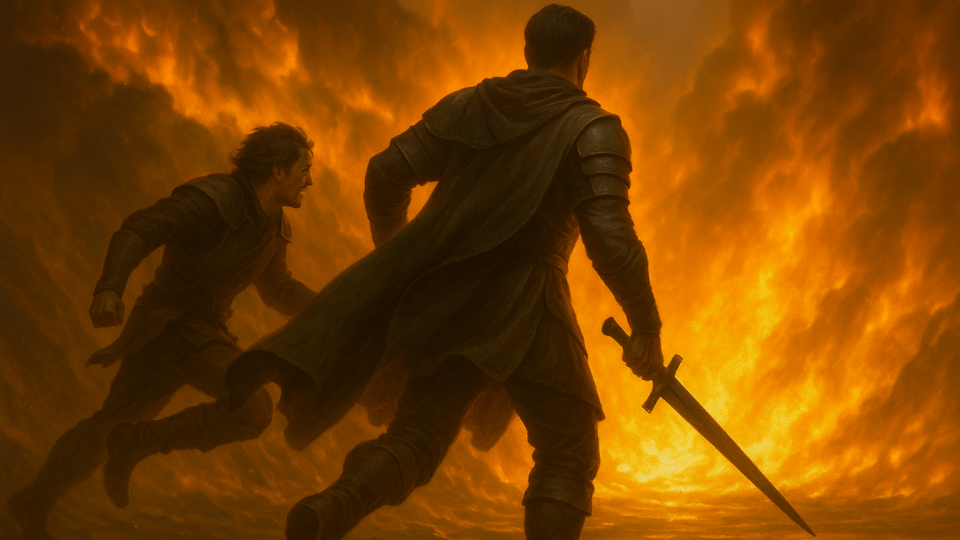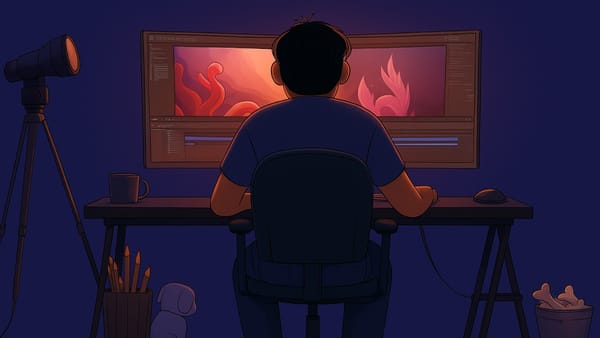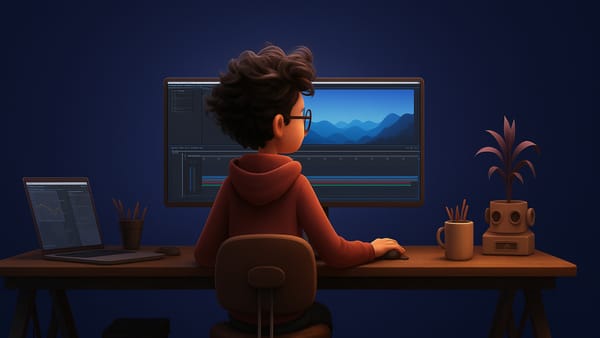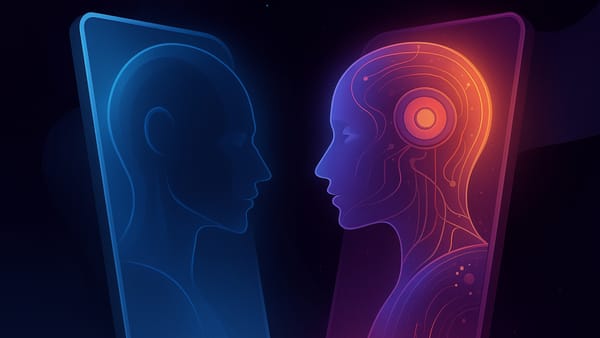AI Video Production Trends 2025: What Creators Can’t Afford to Miss
AI video is changing fast! See what’s taking over in 2025. From faceless creators to text-to-video tools, these trends are shaping the future of content.

97% of leaders putting money into AI are already seeing returns, and creators are right behind them. Today, AI video tools are no longer for tech teams or marketers with large budgets. They’re becoming part of how everyday creators make Shorts, Reels, memes, and promos; fast.
If you post often and care about staying visible, you need to know what’s working now. This guide breaks down the AI video production trends creators are actually using and the one shift that could change how you make content forever.
Key Takeaways:
- AI video tools are now mainstream, not just for large teams—creators are using them to create Shorts, Reels, promos, and memes daily.
- Text-to-video tools enable you to transform a script or prompt into a complete video—no editing skills required.
- Faceless content (avatars, AI voices, no camera) is now standard for meme pages, stories, and multi-account creators.
- Vertical-first output is non-negotiable—AI tools export directly in 9:16, ready for mobile platforms.
- AI storyboarding accelerates planning with auto-generated scenes and camera cues derived from text.
- Voice cloning and multi-language dubbing enable you to create content in multiple languages from a single script.
- Image animation turns fan art or static visuals into full videos with synced speech and motion.
- AI-first templates generate full videos from a short idea—great for promos, memes, and daily posts.
7 AI Video Trends Are Taking Over in 2025
81% of workers still aren’t using AI tools, including creators. That gap is already visible across TikTok, Reels, and YouTube Shorts, where some users are producing daily videos with full AI support while others are stuck editing frame by frame.
If you're still handling voiceovers, animation, and edits manually, you're falling behind. The tools aren’t futuristic; they’re live, fast, and being used right now.
Here’s what you need to know: these AI video production trends in 2025 are changing how content is made, posted, and scaled, and the adoption gap is only getting wider.
Text-to-Video Tools Are Replacing Traditional Editing
AI text-to-video tools enable you to create a full vertical video, including scenes, voiceover, motion, and transitions, simply by typing a prompt or script. No timelines, no software installs, no video editing skills. This isn’t just a shortcut; it’s an entirely different way to produce content. Frameo and similar tools turn written input into cinematic output in minutes.
Why it matters for creators:
- Skip editing timelines and generate videos from text
- Post faster without outsourcing or learning editing apps
- Focus on ideas, not software or setup
- Great for daily content, series, or narrative formats
Use Case:
A fanfiction writer wants to turn a short scene into a TikTok video. Instead of hiring an animator or using editing software, they paste their dialogue into Frameo’s text-to-video tool. The platform generates a 60-second vertical video featuring animated characters, matching voiceovers, camera cuts, and transitions. No timeline or manual editing required.
They post it as part of a daily series, building an audience around scripted, faceless content without ever needing to touch a video editor.
Also Read: AI Video Production: Key Benefits and Future Trends
Faceless Content Is the New Normal
Faceless content refers to videos where the creator never appears on camera. Instead, AI-generated avatars, animated characters, voice synthesis, and screen-based visuals take the lead. This format has evolved in response to privacy concerns, creative preferences, and the rise of character-driven or anonymous storytelling across platforms.
Why it matters for creators:
- You can post consistently without filming yourself
- Ideal for anonymous pages, niche characters, or story-driven content
- Reduces friction for creators who don’t want to show their identity
- Makes content creation more scalable across multiple accounts or formats
Use Case:
A meme page owner runs multiple TikTok accounts built around fictional characters and voiceovers. Using Frameo’s faceless tools, they script scenes, assign each role to an AI voice, and generate videos with animated avatars—no filming, no voice recording, and no appearance required.
Each account has its own style and voice profile, allowing the creator to post up to five videos a day across different niches, all without revealing their identity or using personal footage.
Vertical-First Output Is Non-Negotiable
Most short-form content is consumed vertically—9:16 format is now the default for TikTok, Instagram Reels, YouTube Shorts, and even mobile-first ad platforms. AI video tools are designed to export directly in vertical format, which means no reframing, no manual cropping, and no aspect ratio errors. Every scene, transition, and character is composed specifically for mobile viewing.
Older tools often require manual adjustments or weren’t built with short-form in mind. Vertical-first AI tools solve that by aligning layout, pacing, and screen focus to mobile behaviour from the start.
Why it matters for creators:
- Saves time on cropping or reformatting horizontal content
- Ensures content looks native to each platform
- Reduces mistakes in framing or visual hierarchy
- Matches how your audience actually consumes content—on mobile, full-screen
Use Case:
A solo creator runs a TikTok series reenacting urban legends, utilizing AI-generated voiceovers and animated scenes. They write each script in Frameo, generate the video, and export directly in vertical format. Because the platform frames characters, text overlays, and transitions for a mobile-first feed, the creator posts daily without needing to adjust layouts in CapCut or Premiere.
AI Storyboarding Is Speeding Up the Concept to Publish
Storyboarding has always been the planning stage that most creators skip, mainly because it requires time, specialized software knowledge, or a design background. AI storyboarding changes that.
Tools like Frameo take a written prompt, script, or outline and break it down into shot-by-shot sequences. Each “frame” includes a camera angle, character position, and suggested visuals, allowing you to pre-visualize the entire video before generating it.
Why it matters for creators:
- Helps plan scenes before generating or posting
- Reduces retakes caused by unclear visuals or story flow
- Makes multi-part content easier to structure
- Works without needing illustration, design, or editing skills
Use Case:
A YouTube Shorts creator writes a three-part mini-drama using AI-generated characters. Before generating the full videos, they paste the script into Frameo’s storyboard tool. It breaks the text into a sequence of 10–12 visual shots per episode, each with framing notes and character cues.
This allows them to adjust pacing, swap scenes, or rewrite sections before committing to video, cutting production time and improving continuity across episodes.
Voice Cloning and Dubbing Go Multi-Language
AI voice tools now let creators generate custom voices, clone their own, or assign distinct tones to different characters. This is all without studio gear or manual recording. However, the more significant shift in 2025 is the rise of multilingual dubbing.
With a single script, you can now produce versions in multiple languages, complete with synced lip movement and emotional tone. Tools handle voice generation and translation in one step, making global posting faster and more accessible.
Why it matters for creators:
- No need for microphones, actors, or re-recording
- Supports content in multiple languages without hiring translators
- Maintains character consistency across episodes or accounts
- Lets creators produce entire dialogue scenes with zero voice input
Use Case:
A creator runs a dialogue-based AI podcast series on TikTok in English, built with cloned voices. To reach new audiences, they use Frameo’s multi-language dubbing to create Spanish, Arabic, and Hindi versions of the same videos.
The tool syncs the translated dialogue with character motion and tone. This allows the creator to post daily content across different regions, all from a single script, with no additional recordings required.
Image Animation Is Bringing Fan Art and Memes to Life
Still images are now part of video workflows. AI animation tools can take a single image—such as fan art, a meme, or a character sketch—and add motion, expressions, and synced voice.
You don’t need to animate frame by frame or redraw assets. Tools like Frameo allow you to upload static visuals and turn them into short videos using prompts or scripts. This provides creators with a new way to reuse visual content, particularly in formats where speed is crucial.
Why it matters for creators:
- Adds movement and speech to still images
- No need for design or animation software
- Useful for meme edits, character scenes, or reaction content
- Expands the life of existing art or AI-generated visuals
Use Case:
A creator runs a character page on Instagram and wants to expand to Reels. They upload AI-generated portraits of their characters, add a short dialogue, and use Frameo to animate eye movement, head turns, and synced voice. The result is a daily series of 30-second reels, built entirely from still images.
Templates for Memes, Promos, and Stories Are Going AI-First
Traditional templates required manual editing, text replacement, and formatting adjustments. AI-first templates now auto-fill with prompts, apply styles, and adjust to the platform you’re posting on.
Instead of editing inside a design tool, creators can type an idea, like “product teaser with voiceover” or “birthday meme with captions”—and get a full vertical video in seconds.
These templates aren’t fixed layouts. They adapt to the content, voice, and audience, making it easier to post often without repeating formats.
Why it matters for creators:
- Speeds up content creation for trending formats
- No design or editing experience needed
- Adjusts automatically to TikTok, Reels, or Shorts requirements
- Lets you focus on ideas while AI handles structure
Use Case:
A small business owner wants to post daily Reels for a new product. Instead of editing each video, they use Frameo’s AI promo template. They enter a short product description and choose a voice style. The tool generates a 20-second vertical video with transitions, captions, and voiceover. It’s ready to post, no editing or resizing needed.
Final Take: AI Video Production Isn’t Optional in 2025
The AI influencer economy is approaching $7 billion, and creators who post daily are increasingly relying on automated content editing tools. You’re competing with people using tools that generate scripts, voices, animations, and vertical videos in minutes. If you’re still handling each step yourself, you’re falling behind.
Frameo is built for this kind of fast, AI-first workflow. It lets you create faceless, vertical, and multilingual videos from a single prompt. If you haven’t tried it yet, start now—write a line of dialogue or upload an image and create your first AI video. You’ll see how much faster content gets made when you stop doing everything yourself.
FAQs
1. What are the biggest AI video trends in 2025?
Some of the most widely used trends include text-to-video tools, faceless content creation, vertical-first video output, AI voice dubbing in multiple languages, and prompt-based storyboarding. Creators are using these for TikToks, Reels, Shorts, and more.
2. Can I create AI videos without editing skills?
Yes. Platforms like Frameo let you generate full videos from a prompt or script—no editing timeline, software, or filming experience required. You can add voiceovers, characters, and animation with a few inputs.
3. What is faceless content and why is it popular?
Faceless content uses AI avatars, animations, or visuals instead of showing your face. It's common in meme pages, fanfiction, commentary, and story-based videos where creators prefer to stay anonymous or manage multiple accounts.
4. How do AI dubbing tools help with multilingual content?
AI dubbing tools automatically translate and sync your video dialogue into different languages. They adjust tone, emotion, and lip sync, helping you post content for global audiences without hiring voice actors.
5. What’s the best way to start using AI for video creation?
Start small. Use a text-to-video tool like Frameo to turn a short script or image into a vertical video. Test one feature, such as voiceover or animation, and build from there as you get more comfortable with the workflow.



